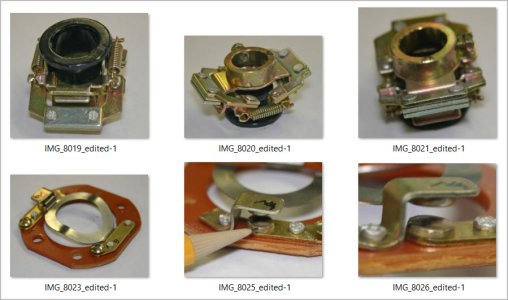That's good. It's always difficult to discuss different opinions when your not face to face, because how a sentence is read and in what tone, can completely change its intention.
So it's good to know that we're just having a friendly chat.
I went down the road of checking the motor 1st because I feel the same as Susquatch and find it hard to believe BB would sell a machine for years with a know problem.....and why would they only identify a small batch of machines as having an issue and then go right back to selling them. That doesn't make sense even for a reseller and Chinese company.
Also, I'm checking the motor first because I'm stubborn and always blindly go down the path I believe is right, even when others have been there and tell me it's wrong. I have to see it for myself type attitude.

Susquatch, make as many suggestions as you like.
I haven't run the motor without the belt because I believe it will easily run up to speed. It runs in 9 of the 12 gears, so it does run with a load. No reason it wouldn't run without load. Stranger things have happened though, so it's an easy test to do.
Last night I removed the motor and checked the centrifugal switch. It looks to be good. If it is dropping out too early (as I suggested), I have no way of changing that, as there is no way to adjust the spring tension. So I'm going to say the switch is ok. (One step closer to an oil change

)
My previous post saying there were 3 windings in the motor is incorrect. There are 2 windings and the capacitor/switch circuit. I had to go online last night and re-educate myself on single phase motors. I say "re-educate", because (embarrassingly) I should know this. I took automation/robotics in college and motors where a big part of it. That was decades ago, though. So, as the saying goes, "
Use it or lose it".
I did check both windings with a meter and get continuity in both, so there is no break there. The meter can't tell me if there is a short somewhere in one of the windings, so that is still a possibility. If there is a short, it would cause a loss of power/torque. I'd have to take it to a rebuilder to get the windings tested properly, which I will do if I can't solve the problem. I also checked the cap circuit, with and without the centrifugal switch closed and it metered as expected.
So I now know for sure what each motor wire is.
My next step is to pull out the forward/reverse switch and confirm it is functioning correctly. Then I'm going to wire the motor and circuit up how I know it should be.
If it still doesn't work.......then I will change the oil. Be patient Tom. I'm getting there.



